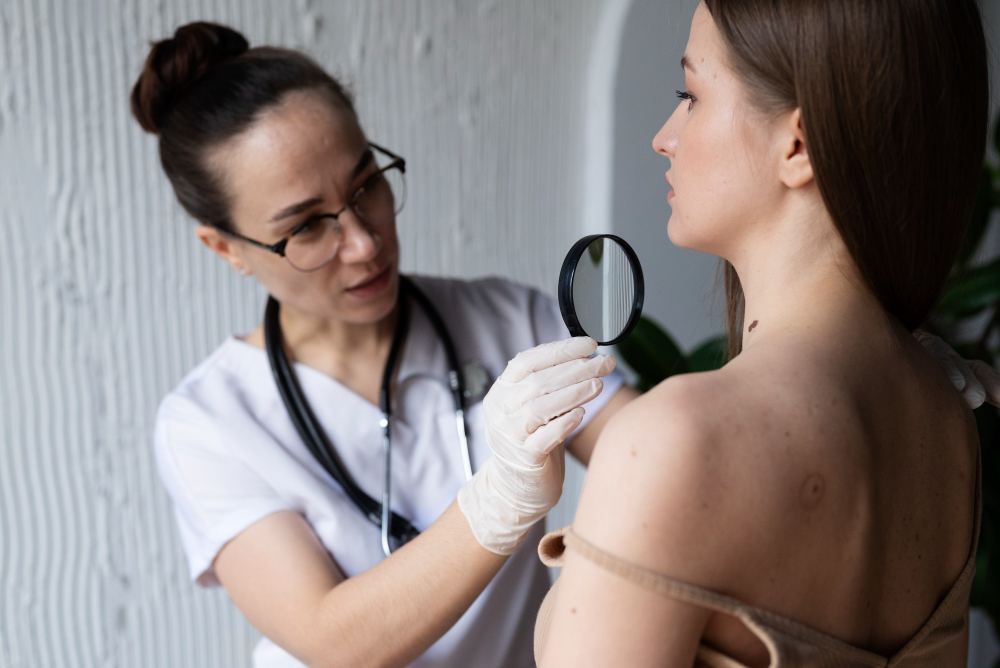Skin cancer is a sickness that causes abnormal growth of skin cells and most often develops on skin exposed to the sun. This is one of the most common types of cancer and it can also occur on areas of your skin that are not ordinarily exposed to sunlight.
The three main types of skin cancer are basal cell carcinoma (BCC), melanoma and squamous cell carcinoma (SCC). It is believed melanoma is one of the most rare types of skin cancer. You will be familiar with these if you keep on reading this guide.
Types Of Skin Cancer: What You Should Know?
We will be discussing the three main types of skin cancer, take a look:
- Basal Cell Carcinoma (BCC)
Basal cell carcinoma is a common type of skin cancer that begins in the basal cells. A variety of cells within the skin that is responsible for producing new skin cells as old ones die off. Although basal cell carcinoma can take other forms, it often appears as a slightly transparent bump on the skin.
The areas of your skin often exposed to the sun are more likely to have this type of skin cancer. Your head and neck are at the top of the list.
- Melanoma
Melanoma is the least common type of skin cancer but the most dangerous one. Melanoma is most likely to spread to other parts of the body including the brain and liver. Risk factors can be fair skin, blue eyes and the sun.
- Squamous Cell Carcinoma (SCC)
This type of skin cancer starts in cells called squamous cells. The squamous cells are responsible for protecting the skin from evaporation and outside forces. Squamous cells play an important role in the sites where transportation and absorption occur in the body. This type of skin cancer is not usually that threatening but if not treated on time it can spread to other parts of the body. The growth can be responsible for serious complications.
Most squamous cell carcinoma cancers are caused by excessive exposure to ultraviolet rays that come either from the sun or tanning beds or lamps.
As we have observed melanoma is the least common and most dangerous type of skin cancer We will move ahead with observing its signs and symptoms.
Melanoma: Signs And Symptoms
Melanoma skin cancer starts in the melanocytes, the cells that make the pigment that gives skin its colour. The pigment is known as melanin.
Melanoma typically starts spreading on the skin and is often exposed to the sun. This may include skin on the arms, back, face and legs. Melanoma can also be formed in the eyes and rarely happens inside the body such as in the nose or throat.
The exact cause of melanoma is not clear yet but most melanomas are caused by exposure to ultraviolet light. Sunlight, tanning beds and lamps can be the main reasons behind this.
Symptoms
The first noticeable melanoma signs and symptoms can be:
- Changes in an existing mole.
- Development of new unusual growth on the skin.
Signs Indicating Melanoma
Some moles are not typical and may have certain characteristics that can indicate melanoma or other skin cancers. Characteristics may include:
- Asymmetric shape: Your search must be for unusual shapes of moles.
- Changes in size: Look for new growth, a mole larger than ¼ inch.
- Changes in symptoms: Ithciness or bleeding can be counted as new symptoms.
- Unusual border: Unusual, notched or scalloped borders must be in your search.
- Colour changes: Look for growths that show unusual colour patterns or many colours.
Some moles will show all the changes listed above, while others will settle for one or two characteristics. You need to pay attention to these unusual growths, and changes in size, colour or patterns. Take the help of someone to examine your body neatly.
Hidden melanomas or melanomas can develop in areas of the body that have little or no exposure to the sun. Spaces between your toes and on the palms of your hands, scalp or genitals should be examined. Visit your nearest healthcare professional if you notice any of the changes listed above.
Conclusion
Skin cancer can occur to anyone and more often to people with fair skin and blue eyes and who are coming in contact with the sun often. You must conduct time-to-time examinations at home and to check hidden areas you must visit for clinical check-ups.
Melanoma is the least common type of skin cancer and the most dangerous one. If your healthcare specialist detects signs early they can provide you with the treatment on time. The signs and symptoms of melanoma can be changes in mole’s colour, shape and size. You must get your mole checks on time.
